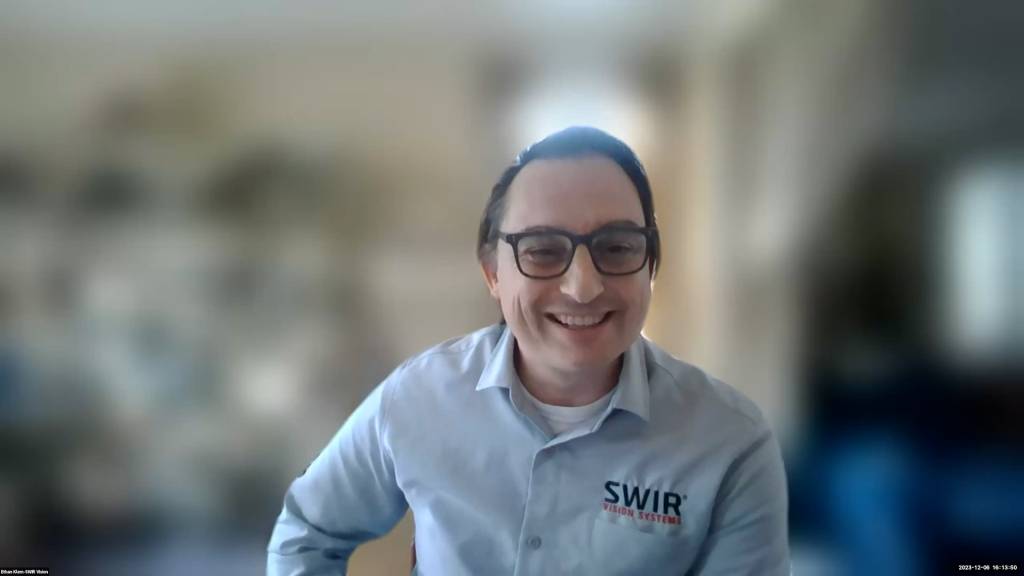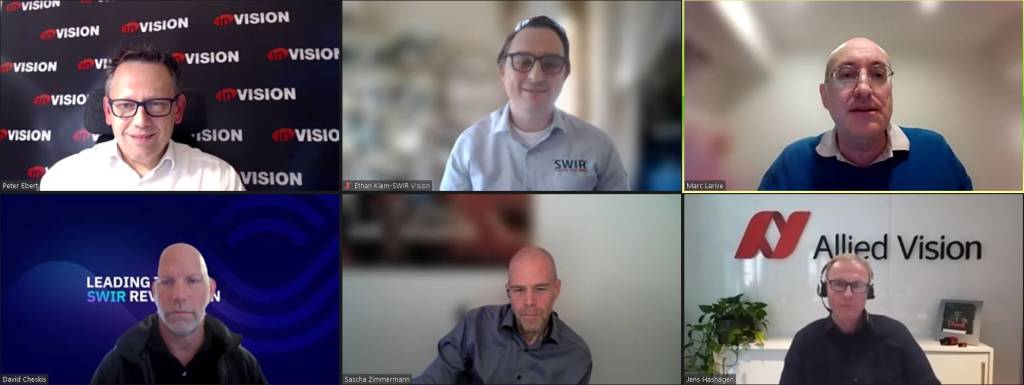Zimmermann: The advantage of the Sony sensor is that it is based on visible light sensor technology, a proven global shutter technology that is very easy to integrate. Macnica ATD has been engaged also with other SWIR sensor vendors in the past which we had to abandon for various reasons.
Larive: The Sony sensor is an InGaAs based technology with a very high performing QE and sensitivity. QD is potentially cheaper for very high resolution but in term of sensitivity the InGaAs sensor is better.
Klemm: There is a difference in temperature dependence of dark current between these technologies. If the temperature rises, the dark current rises, and the shot noise limits the dark current if it rises by the square root of the amount. If we have a dark current temperature of about 10°C, and the common one with InGaAs is about 7°C that doesn’t sound like a lot but when you get to 60 or 70°C operating temperature, that can have a huge impact on the total noise, and under those conditions we might be able to win the sensitivity battle.
Cheskis: Also the system costs. If you’ve got the sensor or system, you know it’s size, costs, power, all those things are different when you go to CMOS based sensors rather than InGaAs.
When is it best to use your SWIR technology and for which applications?
Klemm: QD sensors can add value when having lots of pixels is important and you have a light source. When you’ve got photons, we offer a great solution.
Cheskis: Our technology is optimized and works best when you want depth information together with a SWIR image. Today we’re very focused on automotive as a Lidar kind of replacement or complement, but that also works in shorter range systems like industrial robotics. Our technology can even be used very well in mobile solutions such as the iPhone’s Lidar chip, which enables photo enhancements or depth measurements. Because we can scale the cost and volume, we’re able to address those kinds of markets which other technologies cannot.
Larive: Our technology is based on InGaAs and it allows to go very fast to high speed and high sensitivity. But you have to reduce your need of lightning which would be significant especially for machine vision. Speed is also a question of light because you cannot integrate long time, if you want to go fast and so it’s again a question of sensitivity. Furthermore it’s a broadband solution that’s one of the great advantage of the InGaAs.
Hashagen: If you have sufficient light the Sony sensor do great. If it’s coming to low light applications they are a little bit weaker because of the small pixel sizes, the smaller saturation capacity and the dynamic range. But Sony sensors provide really good imaging qualities. We as a camera manufacturer have also integrated other InGaAs sensor technologies into our cameras, some of them with dual stage thermo-electric cooler (TEC2) enabling to apply very long exposure times. We also have models with extended range sensitivity up to 2.2µm. All these InGaAs sensors have the benefit that they have very high QE of between 70 and 80%, which makes them very sensitive and especially usable for spectral imaging.
Zimmermann: Any application where you have visible light but you want to add an information, for example in agriculture, the Sony sensor technology makes a lot of sense.

Is it true that tobacco manufacturing industry is already using a lot of SWIR cameras?
Zimmermann: Yes, because if you want to have a look at the leaves, which is the most important part of tobacco, you get very good results combining visible light and SWIR. With SWIR you can see diseases or defects on the leaves before you can see them with visible light.
Larive: Usually SWIR is used to see this kind of stuff also in food or waste sorting. Semicon is also a big benefit.
Hashagen: But semiconductor inspection requires very high resolutions and the chips are getting smaller and smaller. Therefore, much smaller pixel sizes are definitely an advantage. Current pixel size is at 5µm and it is decreasing with the next generation of Sony’s sensors.
Larive: Another application is defense. In this case you usually need a low light capability so probably InGaAs is most suitable, but Sony prevent for the use of this application.
Zimmermann: All kind of defense applications are not suitable for Sony because the company simply does not want to enter these markets. Elsewhere, the next SensSWIR technology which is coming up from Sony with smaller pixels will be a game changer.

What is the most promising technology approach to cost down SWIR camera technology?
Cheskis: Typically CMOS based sensors like ours are orders of magnitude cheaper than an InGaAs based sensor. We think that we can put these sensors into mobile devices and then we can really reduce the cost of SWIR cameras.

